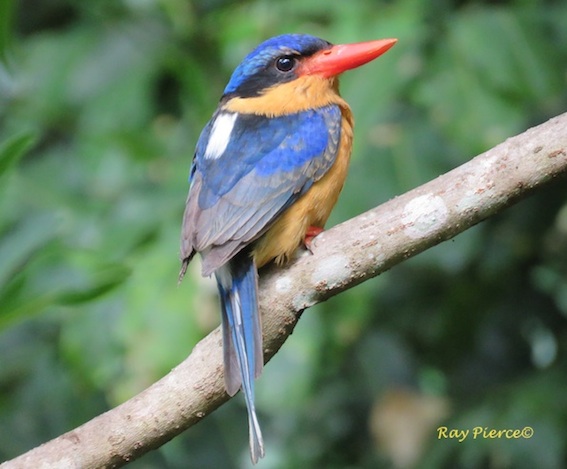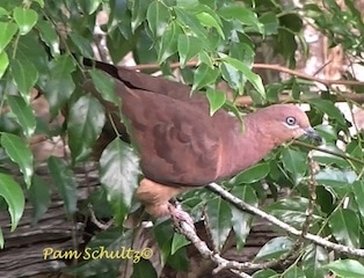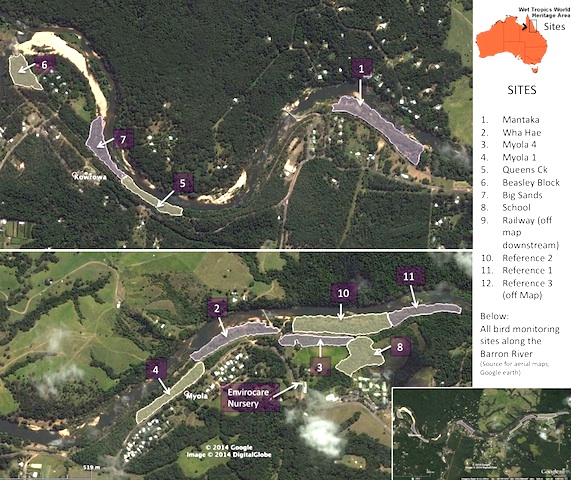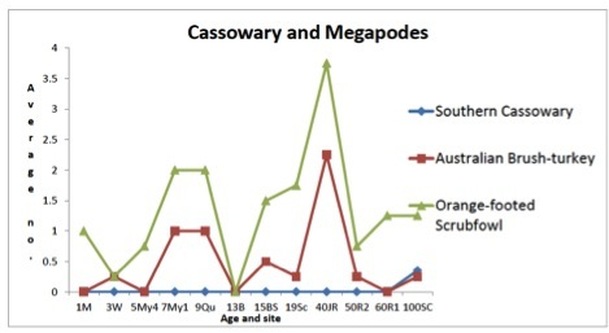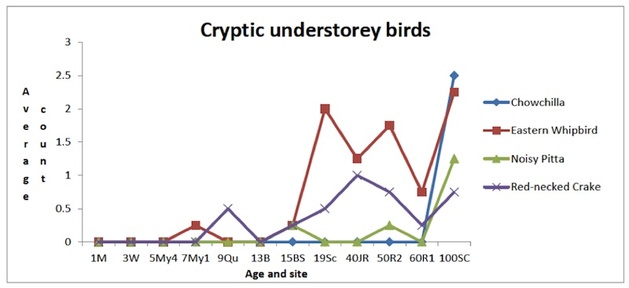Return of the Birds
BirdLife Australia has funded Kuranda EnviroCare Inc. with a grant via their trust fund Australian Bird Environment Foundation (ABEF) on a project to inform the public on bird re-colonisation into our present and historical restoration plantings. The funding provides for building web-pages and up-loading information to educate the public of our volunteer bird-monitoring results.
Why Research?
Numerous scientists have talked of the necessity to increase and preserve biodiversity because it provides humans with services such as clean air, water, fibre, food and medicines (Ref: Australia's Biodiversity Conservation Strategy - click here)
|
EnviroCare’s 18 year revegetation work along the banks and tributaries of the Barron River [see Myola Link project - click here] have linked remnant rainforest and provided new areas for greater movement of fauna that consequently expands flora varieties. However, without systematic and sustained monitoring over a long period there is no qualifying evidence that this revegetation has achieved its goals. The bird monitoring team has gleaned vital evidence that show birds have re-entered the new plantings (click here for graphs). Of course, birds are one of the main depositories of flora species and thus fauna biodiversity.
These are the reasons why environmental volunteers have invested thousands of hours increasing biodiversity and why the Governments have funded NRM groups millions of dollars throughout Australia.
Study Methods
Three main approaches are being used and a fourth is being considered:
|
In the future, also consider focusing on habitat use and requirements of the most sensitive species, e.g. chowchilla, eastern whipbird and noisy pitta.
In the five main study sites (and two mosaics) a baseline survey was completed during October 2012 to September 2013 involving 15 x 40 minute early morning counts in each. Counts will be repeated for the three key restoration sites in 2013-14 keeping as close as possible to the same weeks in the baseline year. The Oct-Dec 2013 period will include the references and 6 rapid survey sites.
We are currently examining in more detail into why some of these patterns might be occurring, e.g. in the case of the fruit-doves their arrival appears to coincide with abundant fruiting of quandong (Elaeocarpus). With the cryptic insectivorous birds however, perhaps it will turn out to be combinations of factors e.g. understory density, amount of leaf litter, presence of gullies and so on, but we need to do more work to figure out all this.
Monitoring Sites
The objectives of the bird monitoring is to measure general patterns of use of the revegetation corridors by rainforest birds over the years. This is done in order to better understand the habitat needs of rainforest specialists or "dependents" to enable adaptation of future restoration [click here to read the living document "Trends in Rainforest Bird Colonisation of Kuranda EnviroCare's Restoration Planting Along the Barron River"]. |
Recovery in Corridors
Site 1 Mantaka
Most of the degenerated sites looked much like the first image of the guinea grass and Rav4 vehicle (for scale). The second image shows tree growth at only two years old with 6 ft person. The rapid growth is due to loamy and rich silt soil and consistent rainfall along the Barron River.
|
|
Site 2 Wha Hae Myola
The first image is a prepared and newly planted site with seedlings and the following image is the same site about four years later. |
|
Site 3 Myola 4
Some Results
The following graphs give a pictorial representation of responses to birds populating new plantings. Each graph is linked to the unpublished PDF report that is presently a living document until it is finalised. In the meantime, Dr Ray Pierce has contributed to a paper published on the open access journal "Land" with a section on Envirocare's bird monitoring project sponsored by Birdlife Australia. See the publication here.
Orange-footed scrubfowl and brush turkey are fairly common along the corridor especially near dwellings (note spikes in graph at Jum Rum, Myola 1 and Queens Block, all close to humans). Southern cassowary, however, have been recorded only in the reference areas (Stoney Creek Rd during this survey, and Barron Reference 1 outside this sampling period).
|
Rainforest understory birds are often the most sensitive to environmental change in the tropics.
|
Other Projects
|
|
|




